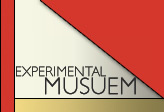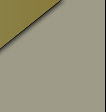Adriana Varejão has made works that refer to the surface and subtexts of her native Brazil, using the imagery of the Baroque architecture and especially the traditional Portuguese azulejos (tiles) that decorate so many surfaces in Brazilian churches. These products of colonial wealth and church power are astonishing in their high degree of decorative detail. They are intoxicating, as they are intended to be. But Varejão literally peels back the surface as if it is a skin to reveal raw flesh or meat beneath. The underlying material is what is structural: flesh and bones. The reference is to slavery and human labor extravagantly spent or sacrificed.
In this work and those in the series, the tiles--- painted, not ceramic--- are similar to modern bathroom tile, bringing the reference home, so to speak. The work is an architectural fragment. The title suggests that the underlying flesh is beef jerky, one of the staples of life among the poorest of the poor in Brazil.
Varejão was born in 1964 in Rio de Janeiro, where she continues to live and work. Her work has been included in exhibitions at the Guggenheim Museum, the Museum of Modern Art, New York, the Walker Art Center, and the San Francisco Museum of Modern Art. She had a monumental solo exhibition at the Cartier Foundation for Contemporary Art, Paris. She participated in the São Paulo Biennial in 1998, the Johannesburg Biennial in 1995 and the first Liverpool Biennial of Contemporary Art in 1999. Her work is represented by Galeria Fortes Vilaça, São Paulo, Lehmann Maupin, NY, and Victoria Munro, London.
Marilyn A. Zeitlin









